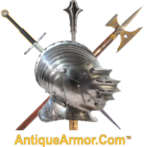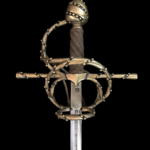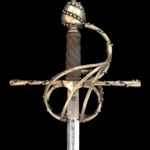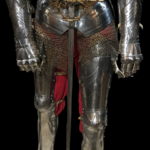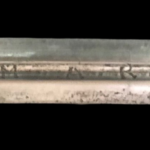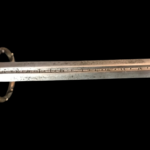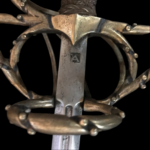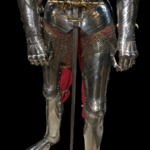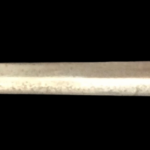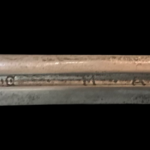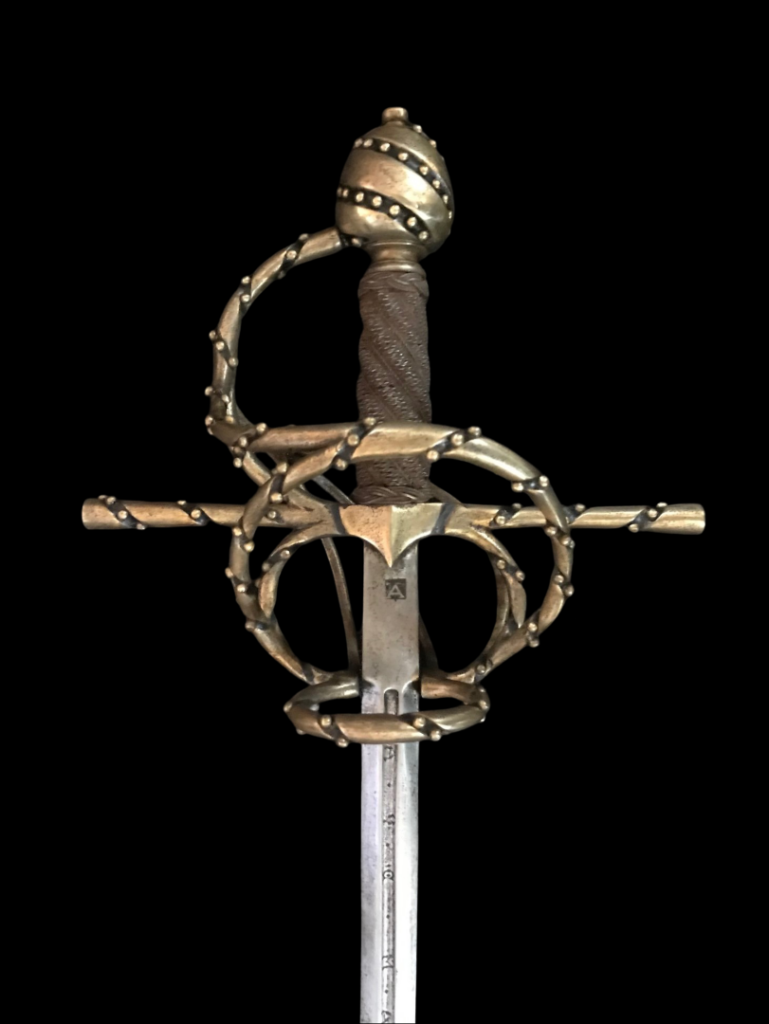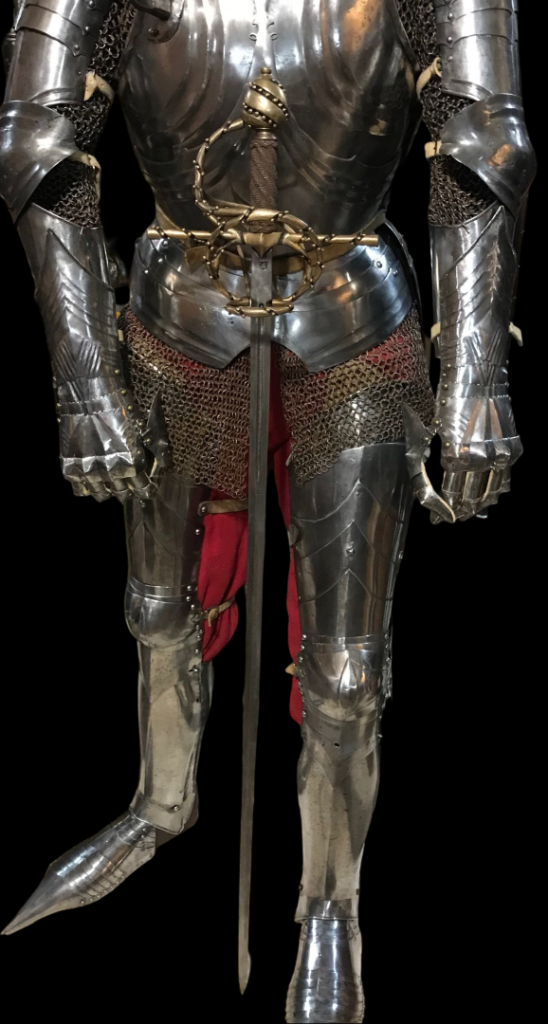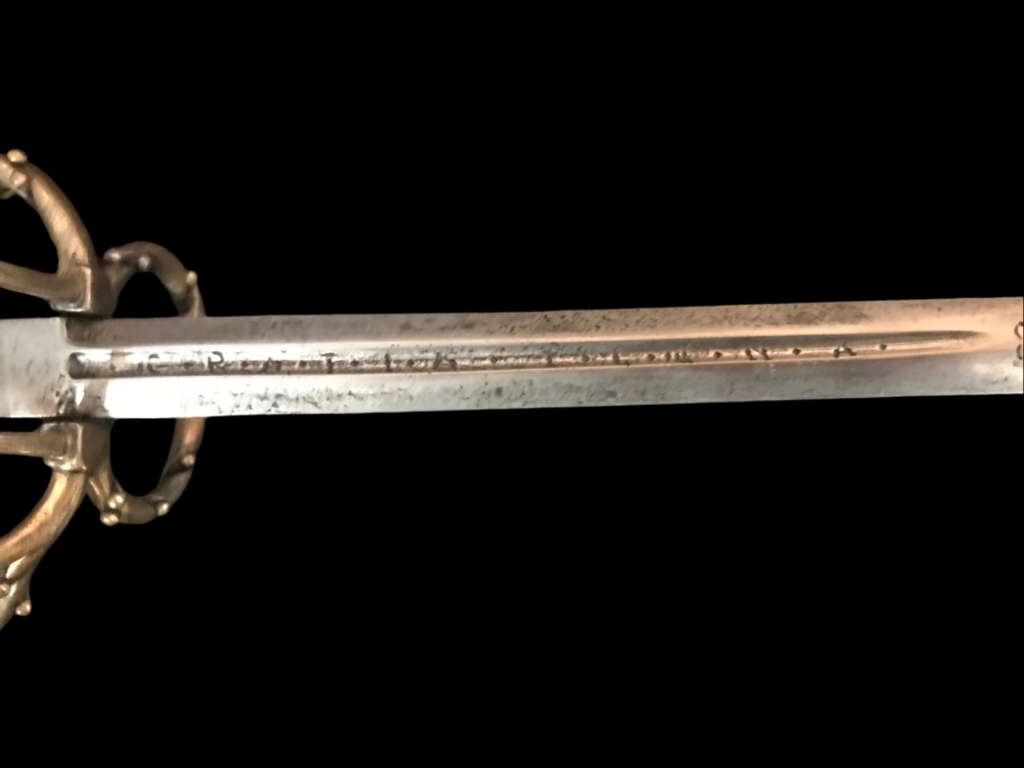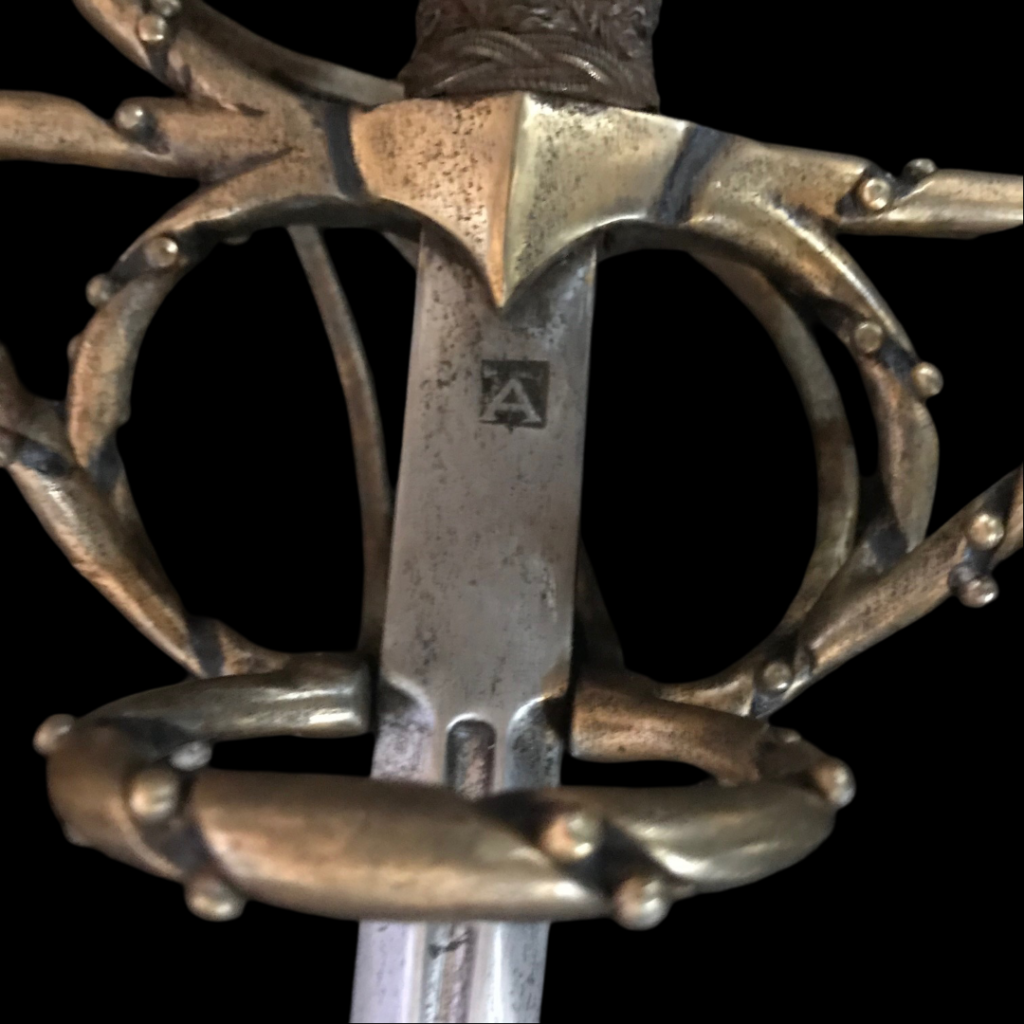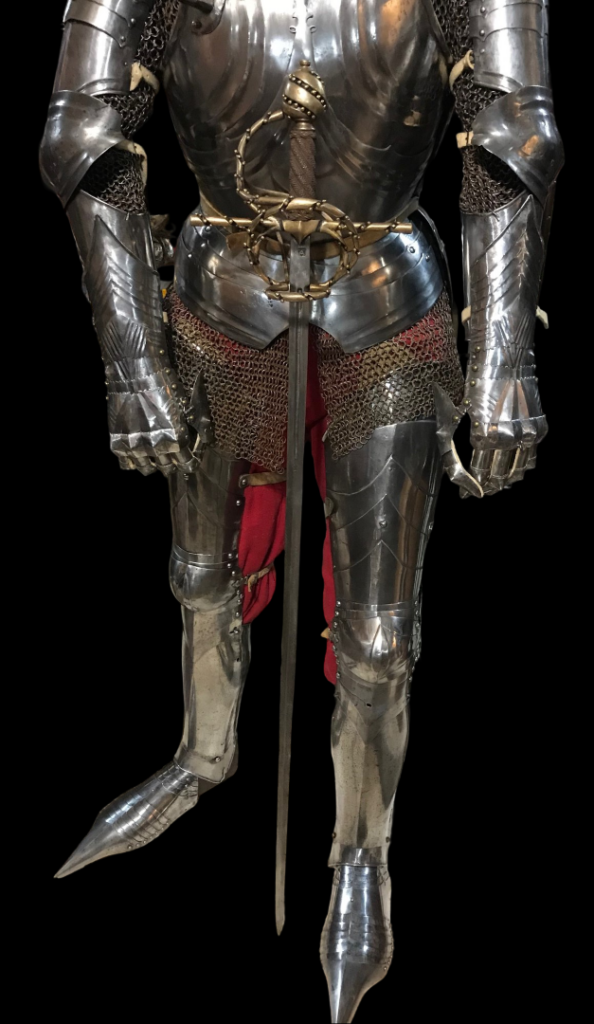Introduction: An example of this sword typology can be found in the painting of Christian the IV of Denmark in 1603 before receiving the Order of the Garter. Another is a painting by Juan Pantoja de la Cruz of Diego Villamayor, dated 1605. I have dated it circa 1580 due to the typology of the pommel, guard, decoration, and blade length.
Description: Under the Norman classification, this is a hilt 58 (1560-1635) with a pommel 54 (1530-80). Constructed with a strong diamond-section tapering blade to a very sharp point with a short fuller originating at its rectangular ricasso, the fuller with the inscription ….AVE MARIA… on one side and …..C.R.A.xxxxxxx……. on the other side. A chevron shape at the quillon block, a makers mark in the rectangular ricasso on both sides in the form of an A, an expanding tubular tip at the quillons and also at the end of the knuckle guard where it meets the pommel. The hilt is decorated in gilt with accents of black relief and with spherical decorations ensuite. Length: 45.50 inches.
Condition: Very good to excellent.
Discussion: In a day and age lacking appropriate policing, the private citizen was forced to protect himself from society‚ criminal dregs. The weapon of choice was the rapier from the middle of the 16th to the end of the 17th century. The rapier is a simple but highly effective sword against the non-armored. The rapier was primarily a thrusting weapon that could inflict serious injury to an adversary‚ vital organs with minimal effort. It was also an exceptional slashing and cutting weapon; however, the slash was not as lethal as the thrust. The slash was used more as a feint to set up a finishing thrust. The slash was also a dire warning to a would-be assailant of the horrors to quickly follow if he chose not to acquiesce.
The rapier is almost undeniably of Spanish origin and is probably Spain‚ most significant contribution to the Renaissance arms race. A highly expensive, ornate rapier was the equivalent of a person in our day and age making a fashion or opulence statement by wearing very expensive jewelry, such as a Rolex or Audemars Piguet watch. Because fencing is more of a thrusting art, it became commonplace throughout Europe to have as long a blade as possible to obtain an advantage. This extravagance in length reached the point that municipalities passed statutes regarding the allowable lengths of blades. Those in violation had the misfortune of having their rapier‚ blades cropped at the tip at the city gate to comply.
One example of these statutes is from an English Royal Proclamation on March 17, 1557. The French adopted the phrase “espee rapiere” by 1475, which later was shortened to simply ‚Äúrapiere,‚Äù the English in 1505 spelled it “rappyer.” The Giles Duwes English/ French dictionary of 1532/3 adopted the rapier’s definition as “Spannyshe sworde.” By 1550, the term rapier had been adopted to describe a slender, sharply pointed sword designed for thrusting, cutting, and slashing attacks. The rapier now consisted of a hilt protected by a handguard.
Comparables: include from such notable institutions as:
– A Odescalchi Collection inv # 223.
– Wallace Collection cat # A589.
– Zurich Landesmuseum Inv. No. AG2476
Provenance: From a private world-class rapier collector who seldom, if ever, sells his best.
Conclusion: World-class rapiers like this seldom make it to the collectors’ market. This is an exceptional fighting sword, and from its mint condition was almost certainly worn by some fat, wealthy person who had bodyguards and never personally engaged in mortal combat in his life. This is a rare opportunity. ACT-NOW! I promise you won’t be disappointed !!!*
All my items come with the following:
–Free shipping.
–10-day review period.
–Certificate of Authenticity.
– Free autographed copy of my book if you do not have one.
– In the event of an international shipment, we will help assign the lowest correct Customs tariff so you pay the least as little as 5% or even nothing.
I believe you will be very pleased. ACT-NOW!!!*
antique armor, medieval armor, antique sword, antique swords, Viking swords, sword, swords, medieval antiques, suit of armor, viking, antique rapier, rapier, maximilian armor, maximilian, halberd, antique halberd, shield, rapier, etched rapier, saxon, etched helmet, antique shield, shield, antique sword, medieval sword, antique breastplate, armour, antique armour
